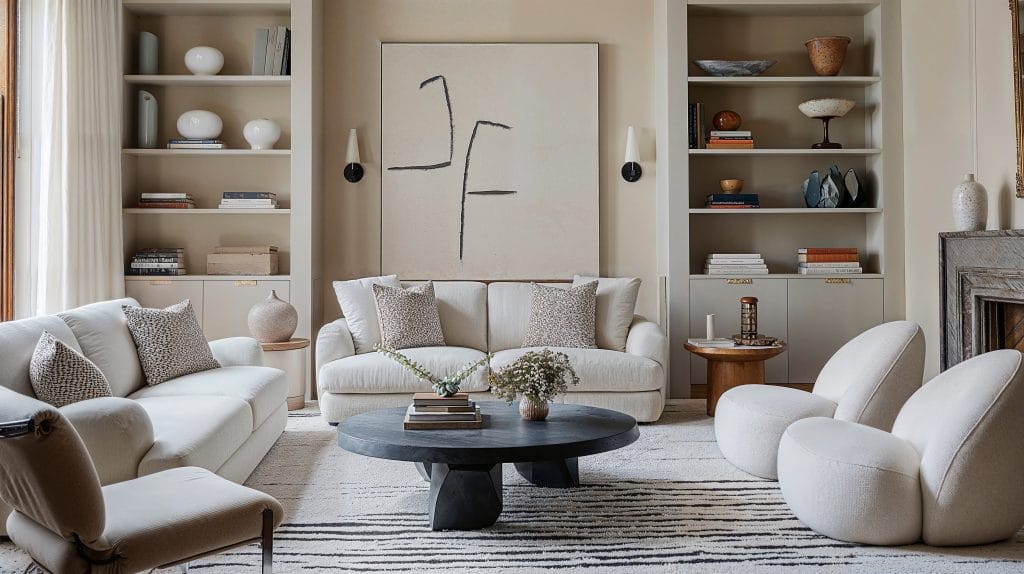Consult an innovative Architecture Firm for cutting-edge and creative designs.
Consult an innovative Architecture Firm for cutting-edge and creative designs.
Blog Article
Transform Your Home With Necessary Principles of Interior Style and Appearances
By understanding the impact of color theory and the importance of appearance and patterns, one can develop spaces that are not only visually attractive yet also deeply personal. Attaining this stability involves more than mere design; it incorporates a strategic arrangement and a keen understanding of exactly how each aspect engages within a room.
Understanding Color Theory
Comprehending the concepts of shade concept allows designers to develop areas that resonate emotionally with occupants while meeting useful demands. Each category plays an essential function in developing harmony within a space.
The emotional influence of colors is profound; cozy shades such as reds and oranges evoke energy and warmth, while cool tones like blues and environment-friendlies promote peace and harmony. Furthermore, the usage of corresponding shades enhances aesthetic interest, developing striking contrasts that can raise a room's charm.
Neutral shades, on the other hand, act as a functional backdrop, permitting other layout elements to radiate. It is vital to take into consideration elements such as lights and the room's purpose when selecting a shade palette, as these can change the assumption of colors throughout the day.
Eventually, a well-considered shade scheme can change a room, fostering a sense of convenience and style that lines up with the inhabitants' preferences. Proficiency of shade theory is, for that reason, a vital skill for any kind of interior designer aiming to produce unified and inviting atmospheres.
Attaining Equilibrium in Layout
Just how can developers accomplish a sense of balance in their rooms? Accomplishing balance in design is basic to developing unified interiors.
Asymmetrical equilibrium, on the various other hand, counts on differing elements that still accomplish a cohesive appearance. This technique enables even more dynamic and casual plans, offering interest while maintaining stability. By meticulously choosing varying dimensions, colors, and structures, designers can develop a visually engaging area that feels balanced yet energetic.
Radial equilibrium highlights a central prime focus with components radiating exterior. This style is commonly seen in round designs, where furniture and style produce a natural surround that attracts the eye internal.
Eventually, attaining balance calls for thoughtful consideration of scale, percentage, and the connections between aspects. interior design firms. By masterfully applying these balance concepts, developers can transform spaces right into atmospheres that really feel both visually pleasing and functionally harmonious, boosting the general experience for passengers
Relevance of Spatial Understanding

A keen sense of spatial recognition allows designers to determine focal points within a space, directing the audience's attention to vital functions while preserving a general sense of unity. It additionally assists in the calculated positioning of illumination, which can substantially affect the perception of space and state of mind. Comprehending spatial relationships enables the developer to cater to the specific demands of occupants, guaranteeing that each location serves its designated objective without endangering aesthetics.
Eventually, spatial recognition is important for making the most of the potential of any interior area. By carefully taking into consideration the interplay in between measurements, design, and function, developers can develop atmospheres that not only fulfill functional requirements however additionally evoke a feeling of convenience and charm, enhancing the general living experience.
Including Texture and Patterns
Welcoming a diverse series of structures and patterns can significantly boost the visual and tactile allure of an interior room. The strategic use of numerous materials-- such as timber, steel, fabric, and rock-- produces deepness and interest, making a room really feel more welcoming and vibrant. Integrating smooth surfaces with rough textures can develop a balance that draws the eye and engages the detects.
When incorporating patterns, take into consideration both range and repeating. Large patterns can work as focal points, while smaller sized, subtle designs can site web match various other aspects without frustrating the space. Layering patterns, such as pairing floral paddings with candy striped tosses, includes complexity and a sense of consistency if performed thoughtfully.
It is likewise vital to preserve a cohesive shade palette, making sure that appearances and patterns interact as opposed to complete for attention. By picking a couple of crucial structures and patterns, you can create an unified visual that shows your individual style while improving the overall atmosphere of the space. Inevitably, the mindful consolidation of these components can Find Out More transform a mundane room into a sophisticated environment rich with personality and warmth.
Customizing Your Room
Producing an area that reflects your character is important to achieving an absolutely welcoming atmosphere. Customization in indoor layout permits you to infuse your distinct design and passions into your home, transforming it from a plain sanctuary into a sanctuary that speaks with that you are. Begin by choosing a shade combination that reverberates with your emotions-- vibrant colors can invigorate, while soft tones offer peace.
Include art work and style that mirror your passions, whether it be travel, nature, or abstract ideas. Showing individual collections, such as publications, photographs, or mementos, can stimulate valued memories and create centerpieces within an area. Furthermore, consider personalizing functional items, like upholstered furniture, to line up with your aesthetic choices.

Verdict
To conclude, the improvement of a home through the essential concepts of interior style and looks requires a comprehensive understanding of color concept, balance, spatial recognition, texture, and customization. Each element adds significantly to producing a harmonious and practical living setting - Architecture Firm. By thoughtfully incorporating these concepts, individuals can improve the aesthetic appeal moved here and psychological resonance of their areas, ultimately promoting a home that mirrors unique identities while offering convenience and usefulness
Report this page